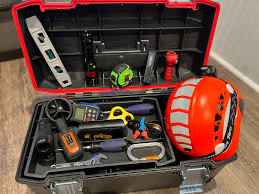Firefighting is a demanding and dangerous profession that requires not only courage and skill but also the right tools and techniques. Just as a carpenter relies on their toolbox to build, repair, and create, firefighters depend on a range of equipment and strategies to combat fires effectively. In this blog post, we’ll explore the essential elements of a firefighter’s toolbox, from equipment to techniques, highlighting their crucial roles in saving lives and property.
Understanding the Firefighter’s Toolbox:
Protective Gear:
At the heart of a firefighter’s toolkit lies their indispensable protective gear, a comprehensive ensemble comprising turnout gear, helmets, gloves, and boots. Turnout gear, consisting of a fire-resistant jacket and pants, forms the frontline defense against the ravages of fire, smoke, and hazardous materials. Engineered with cutting-edge materials and advanced technologies, modern firefighting attire is meticulously crafted to endure the blistering temperatures of infernos while furnishing crucial insulation and protection.
This armor-like apparel serves as a barrier between firefighters and the perils they face, enabling them to navigate through treacherous environments with resilience and confidence. Without the safeguard of this essential equipment, the inherent dangers of firefighting would render the heroic task of entering burning structures an insurmountable risk.
Self-Contained Breathing Apparatus (SCBA):
The SCBA is a vital piece of equipment that allows firefighters to breathe in hazardous environments. Consisting of a mask, regulator, and air tank, the SCBA supplies clean, compressed air to firefighters, enabling them to navigate through smoke-filled buildings and extinguish fires without risking smoke inhalation or asphyxiation.
Fire Suppression Tools:
Firefighters depend on a range of tools for efficient fire suppression, encompassing fire hoses, nozzles, hydrants, pumps, and high-pressure hoses and fittings. Fire hoses serve as conduits for delivering water or firefighting foam to douse flames, while nozzles afford firefighters control over water direction and flow. Hydrants furnish an accessible water source, while pumps enhance water pressure, enabling delivery over extended distances. Additionally, high-pressure hoses and fittings play a crucial role in ensuring the effective deployment of water resources during firefighting operations.
Extrication Equipment:
Firefighters often encounter situations where they need to extricate individuals from vehicles or confined spaces. Extrication equipment such as hydraulic rescue tools (e.g., spreaders, cutters, and rams) are essential for cutting through metal, breaking glass, and lifting heavy objects. These tools enable firefighters to rescue trapped victims safely and efficiently.
Thermal Imaging Cameras:
Thermal imaging cameras are invaluable tools for firefighters, especially in situations where visibility is limited due to smoke or darkness. These cameras detect heat signatures, allowing firefighters to locate hotspots, identify potential fire spread, and search for victims in low-visibility conditions. By providing real-time thermal images, these cameras enhance situational awareness and improve firefighting effectiveness.
Communication Systems:
Effective communication is essential for coordinating firefighting efforts and ensuring the safety of all personnel on the scene. Firefighters use two-way radios, headsets, and communication systems to relay critical information, coordinate tactics, and request additional resources. Clear and reliable communication is vital in high-stress environments where split-second decisions can mean the difference between life and death.
Training and Techniques:
In addition to equipment, firefighters rely on extensive training and specialized techniques to handle various firefighting scenarios. This includes fire behavior knowledge, search and rescue techniques, ventilation strategies, and incident command procedures. Training exercises, simulations, and ongoing education ensure that firefighters are prepared to respond effectively to any emergency they may encounter.
Conclusion
The firefighter’s toolbox encompasses a wide range of equipment and techniques designed to combat fires and protect lives. From protective gear and breathing apparatus to specialized tools and communication systems, each component plays a critical role in ensuring the safety and effectiveness of firefighting operations. By understanding the importance of these essential elements and investing in training and resources, firefighters can continue to uphold their commitment to serving and protecting their communities.





